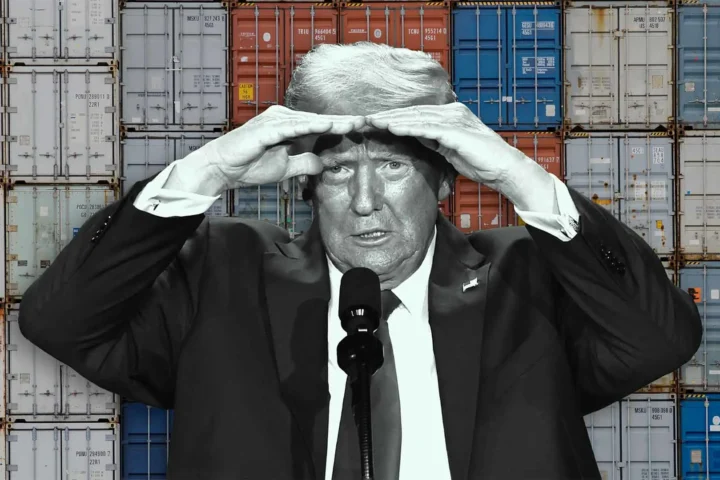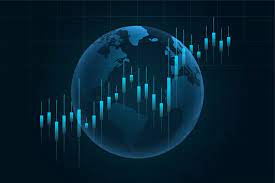Fundamental analysis is a cornerstone of forex trading, helping traders understand the intrinsic value of currencies by examining economic, political, and social factors. Unlike technical analysis, which focuses on price charts and patterns, fundamental analysis looks at the bigger picture. For beginners, mastering fundamental analysis is essential to making informed trading decisions. This guide will break down the main components of fundamental analysis and provide in-depth examples to help you get started.
📌 What is Fundamental Analysis?
Fundamental analysis involves evaluating the economic health and performance of a country to predict the future value of its currency. It examines factors such as economic indicators, interest rates, geopolitical events, and monetary policies. By understanding these elements, traders can anticipate currency movements and make better trading decisions.
🌟 Why is Fundamental Analysis Important?
- Long-Term Trends: Fundamental analysis helps identify long-term trends in currency values.
- Market Sentiment: It provides insight into how economic events influence market sentiment.
- Risk Management: Understanding fundamentals helps traders anticipate market-moving events and manage risk.
- Informed Decisions: It allows traders to make decisions based on real-world data rather than just price movements.
📚 Key Components of Fundamental Analysis
Fundamental analysis in forex trading revolves around several key components. Let’s explore each in detail:
1. Economic Indicators
Economic indicators are statistics that reflect the economic health of a country. They are released periodically by government agencies and private organizations. Here are some of the most important ones:
a. Gross Domestic Product (GDP)
- What It Is: GDP measures the total value of goods and services produced by a country.
- Why It Matters: A growing GDP indicates a strong economy, which can strengthen the currency.
- Example: If the U.S. GDP grows by 3% in a quarter, the USD may appreciate against other currencies.
b. Inflation (CPI and PPI)
- What It Is: The Consumer Price Index (CPI) and Producer Price Index (PPI) measure changes in price levels.
- Why It Matters: High inflation can erode purchasing power, leading to currency depreciation. Central banks often raise interest rates to combat inflation, which can strengthen the currency.
- Example: If the Eurozone CPI rises above the European Central Bank’s (ECB) target, the ECB may raise interest rates, boosting the EUR.
c. Employment Data
- What It Is: Reports like the U.S. Non-Farm Payrolls (NFP) track job creation and unemployment rates.
- Why It Matters: Strong employment data indicates a healthy economy, which can strengthen the currency.
- Example: If the U.S. NFP report shows 250,000 new jobs, the USD may rise due to increased economic optimism.
d. Retail Sales
- What It Is: Retail sales measure consumer spending, a key driver of economic growth.
- Why It Matters: Rising retail sales suggest strong consumer confidence, which can boost the currency.
- Example: If U.K. retail sales increase by 2% in a month, the GBP may strengthen.
2. Interest Rates
Interest rates are set by central banks and are one of the most critical factors in forex trading.
a. Central Bank Policies
- What It Is: Central banks, like the Federal Reserve (Fed) or the European Central Bank (ECB), set interest rates to control inflation and stabilize the economy.
- Why It Matters: Higher interest rates attract foreign investment, increasing demand for the currency.
- Example: If the Fed raises interest rates, the USD may appreciate as investors seek higher returns.
b. Interest Rate Differentials
- What It Is: The difference in interest rates between two countries affects currency pairs.
- Why It Matters: Traders often buy currencies with higher interest rates and sell those with lower rates (carry trade).
- Example: If the U.S. interest rate is 5% and Japan’s is 0%, traders may buy USD/JPY to profit from the interest rate differential.
3. Political Stability and Geopolitical Events
Political stability and geopolitical events can significantly impact currency values.
a. Elections
- What It Is: Elections can lead to changes in government policies, affecting the economy and currency.
- Why It Matters: A stable government with pro-growth policies can strengthen the currency.
- Example: If a pro-business candidate wins the U.S. presidential election, the USD may rise due to increased investor confidence.
b. Geopolitical Tensions
- What It Is: Conflicts, trade wars, or sanctions can create uncertainty, leading to currency volatility.
- Why It Matters: Safe-haven currencies like the USD and JPY tend to rise during geopolitical crises.
- Example: During the Russia-Ukraine conflict, the USD and JPY strengthened as investors sought safety.
4. Trade Balance
The trade balance measures the difference between a country’s exports and imports.
a. Trade Surplus vs. Deficit
- What It Is: A trade surplus occurs when exports exceed imports, while a deficit occurs when imports exceed exports.
- Why It Matters: A trade surplus can strengthen the currency, as it indicates high demand for the country’s goods.
- Example: If China reports a large trade surplus, the CNY may appreciate due to increased foreign demand for Chinese products.
5. Monetary Policy and Central Bank Statements
Central banks play a crucial role in shaping currency values through monetary policy.
a. Quantitative Easing (QE)
- What It Is: QE involves central banks buying assets to inject money into the economy.
- Why It Matters: QE can weaken the currency by increasing the money supply.
- Example: If the Bank of Japan announces QE, the JPY may depreciate.
b. Central Bank Statements
- What It Is: Central banks issue statements after policy meetings, providing insights into future actions.
- Why It Matters: Hawkish statements (hinting at rate hikes) can strengthen the currency, while dovish statements (hinting at rate cuts) can weaken it.
- Example: If the ECB signals future rate hikes, the EUR may rise.
📊 Example: Applying Fundamental Analysis
Let’s say you’re analyzing the EUR/USD pair:
- Economic Indicators: The Eurozone reports strong GDP growth and rising retail sales, indicating a healthy economy.
- Interest Rates: The ECB hints at raising interest rates to combat inflation.
- Political Stability: The Eurozone experiences political stability, with pro-growth policies in place.
- Trade Balance: The Eurozone reports a trade surplus, boosting demand for the EUR.
Based on this analysis, you might conclude that the EUR is likely to strengthen against the USD and decide to buy the EUR/USD pair.
💡 Tips for Using Fundamental Analysis
- Stay Updated: Follow economic calendars and news outlets to stay informed about key events.
- Combine with Technical Analysis: Use fundamental analysis to identify trends and technical analysis to time your entries and exits.
- Focus on High-Impact Events: Prioritize major economic indicators and central bank meetings, as they have the most significant impact on currency prices.
- Practice Patience: Fundamental analysis is about long-term trends, so avoid making impulsive decisions based on short-term fluctuations.
🚀 Final Thoughts
Fundamental analysis is a powerful tool for forex traders, providing insights into the forces that drive currency values. By understanding economic indicators, interest rates, political events, and central bank policies, you can make informed trading decisions and improve your chances of success.
As a beginner, take the time to study these components and practice analyzing real-world examples. Over time, you’ll develop the skills and confidence needed to navigate the forex market effectively.










